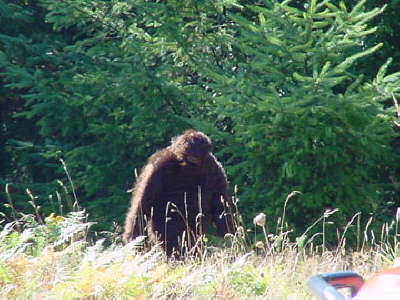
A British-Swiss team will use DNA testing to investigate the origins of remains claimed to be from yeti and bigfoot.
The project will examine hair, bone and other material from a collection amassed by a Swiss biologist – and will invite submissions from elsewhere.
Many cultures relate legends of hairy, humanoid creatures that lurk in the wilds, rarely seen.
But material claimed to be from such creatures have never been subjected to modern scientific techniques.
“It’s an area that any serious academic ventures into with a deal of trepidation… It’s full of eccentric and downright misleading reports,” said Prof. Bryan Sykes, from Oxford University.
The researchers will apply a systematic approach and employ the latest advances in genetic testing, aiming to publish in peer-reviewed scientific journals.
“There have been DNA tests done on alleged yetis and other such things but since then the testing techniques, particularly on hair, have improved a lot due to advances in forensic science,” the Oxford geneticist told Reuters news agency.

Modern testing could get valid results from a fragment of a shaft of hair, added Prof. Bryan Sykes, who is leading the project with Michel Sartori, director of the Lausanne Museum of Zoology.
A 1951 expedition to Mount Everest famously returned with photographs of giant footprints in the snow, fuelling speculation about giant Himalayan creatures, unknown to science.
Since then, many eye-witness reports of such creatures have emerged from remote regions of the world.
These humanoid beasties are variously known as the “yeti” or “migoi” in the Himalayas, “bigfoot” or “sasquatch” in North America, “almasty” in the Caucasus mountains and “orang pendek” in Sumatra, but there are many others.
Tests up to now have usually concluded that alleged yeti remains were in fact human. But, said Prof. Bryan Sykes, “there has been no systematic review of this material.”
The project will focus on an archive of remains held at the Lausanne museum that was assembled by Bernard Heuvelmans, a Belgian-French biologist who investigated reported yeti sightings from 1950 up to his death in 2001.
Other institutions and individuals will also be asked to send in details of any possible yeti material.
Aside from the yeti question, Prof. Bryan Sykes said he hoped the project would add to the growing body of knowledge on the interaction between different human species in the past.
“In the last two years it has become clear that there was considerable interbreeding between Homo sapiens and Neanderthals … about 2% to 4% of the DNA of each individual European is Neanderthal,” he said.
Those who are favorable to the idea of as-yet undescribed creatures say the yeti and orang pendek could represent survivals of Homo erectus, Homo floresiensis (the Indonesian “Hobbit”) or Gigantopithecus – a giant ape that once inhabited the forests of East Asia. The idea has even spawned the term “cryptozoology” to describe the search for such beasts.
Others are highly skeptical of such tales, and consider the subject unworthy of serious scientific investigation.
Asked about the project’s chances of success, Prof. Bryan Sykes said: “The answer is, of course, I don’t know,” adding, “it’s unlikely, but on the other hand if we don’t examine it we won’t know.”